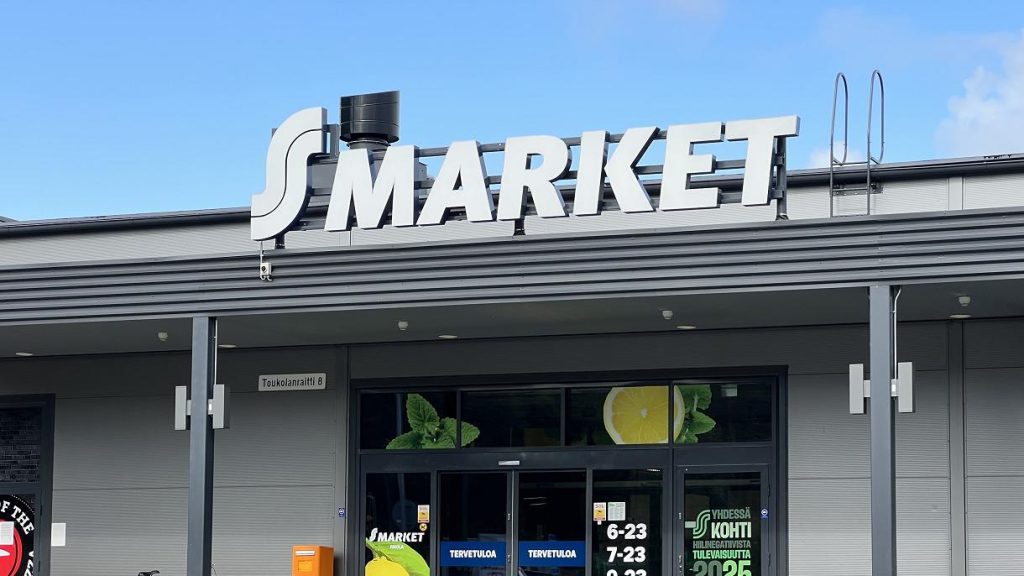“The interesting thing about S Group is that it’s boring,” Evan Carr told me. We were standing in an S Market, a midsized grocery store chain, in the middle of downtown, near the train station. Sure enough, it was a completely unremarkable grocery store, somewhat fancier than Albertsons but less fancy than Whole Foods, with a large selection of all the usual foods, beverages, household goods, and so on. It was also packed with shoppers picking things up after the end of the working day.
Carr, a tech worker who was born in America but has lived in Finland for more than 20 years, pointed to various labels on the shelves for vegetarian, vegan, or organic items. “You can request items and get them stocked,” he said. “I’ve done it myself.”
The interesting thing about S Market, and what brought me all the way to Finland, is not this bog-standard grocery store. It’s the parent entity S Group, a cooperative network owned by its members—and one of the biggest and most successful companies in Finland. S Group has about 2.5 million members—in a country of just 5.6 million inhabitants—representing 78 percent of Finnish households, along with 41,000 employees, 1,984 business locations, and an annual revenue of €13.5 billion last year. S Group accounts for fully 47 percent of the Finnish grocery market.
While nowhere near Walmart in absolute terms, relative to the size of the Finnish economy, it’s about twice as large as Walmart’s U.S. operations, which controls about a quarter of domestic grocery spending. And it’s member-owned.
From an American perspective, this is difficult to understand. Practically our whole society is built on the assumption that the only way to have a wealthy, productive economy is for entrepreneurs to be incentivized with massive rewards for building efficient businesses. It is necessary for people like Jeff Bezos and Elon Musk to become rich beyond the dreams of avarice, so the theory goes, because otherwise we wouldn’t have Amazon or Tesla.
One might attack this narrative empirically—Amazon was helped tremendously in its early days by not paying state sales taxes, while Tesla has relied on large government subsidies for most of its existence—but S Group poses a more fundamental challenge. Here we have a hyper-efficient retail operation, run with cutting-edge management and logistics, dominating half the grocery market of a wealthy country, without minting a single billionaire in the process. It is not just competitive with capitalist business; it is more successful.
How did it happen?
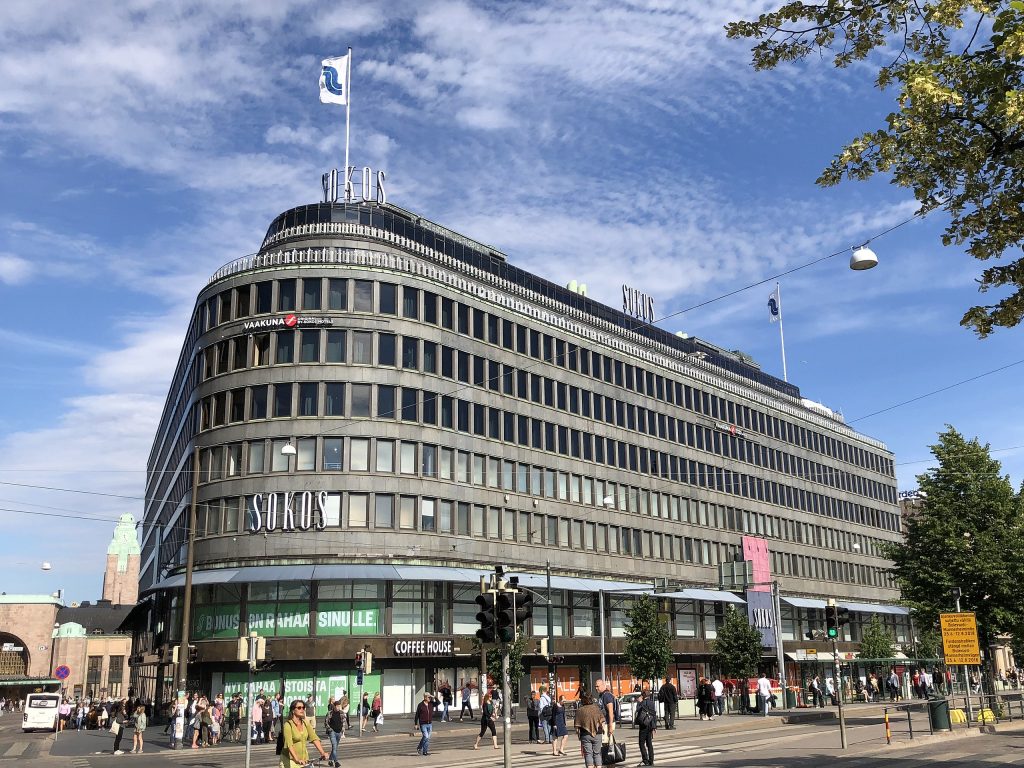
THE ANSWER IS COMPLICATED. S Group’s history goes back over a century, to when Finland was a Russian colony called the Grand Duchy of Finland. For most of the 19th century, Finland had been granted relative autonomy by its Russian overlord (who stole it from Sweden in 1809), but in 1898 a new policy of Russification was imposed under Tsar Nicholas II. This created a backlash among Finns, and combined with the dislocations of incipient industrialization, this fueled a desire for economic institutions under local control.
One option was the cooperative movement, led by the economist Hannes Gebhard and his wife Hedvig, who studied cooperatives in the U.K. and Germany. Whereas a capitalist business is owned by a handful of entrepreneurs or investors to make as much profit as possible for themselves, a cooperative is owned by a large number of members who run it for their collective benefit, in which profit is one of many priorities. Blue Diamond Almonds, for instance, is a producer cooperative representing 3,000 almond growers. S Group, meanwhile, is a consumer co-op in which members own the stores at which they shop.
Gebhard “thought that cooperatives could be a very important vehicle against Russification, but it should be done in such a way that the Russians would not pay attention,” explained economist Samuli Skurnik, former CEO of Pellervo Society in the 1990s and early 2000s, who has studied the cooperative movement for decades. This helps explain the bland names of the cooperative institutions: The Pellervo Society was founded in 1899 as an umbrella organization for all cooperatives, but its name is a random reference to a Finnish epic. SOK, embryo of the S Group, was founded in 1904 principally as an association of local agricultural cooperatives for farmers. The idea was to provide joint sales and purchasing institutions for farmers (then about 90 percent of the population), along with customer-owned retail shops, which would be controlled by Finns and keep money circulating within Finland. Later, another consumer co-op, E Group, was spun off for workers, who wanted their own institutions at a time of bitter political polarization.
Suomen Osuuskauppojen Keskuskunta (Central Finnish Cooperative Society, or SOK) was founded in 1904. Once the local co-op societies were founded, SOK evolved into a central coordinating body for S Group, while the Pellervo Society developed into a sophisticated outfit providing research, data, advice, and lobbying for all Finland’s co-ops. S Group grew steadily over the following decades, interrupted by the First World War and later the Finnish Civil War, but bouncing back afterward. By 1950, SOK was the largest wholesale business in the country, and later that decade S Group founded its first department store, Sokos.
Finland remained relatively economically backward compared to the rest of Northern Europe through the end of World War II. But it began to catch up to its neighbors during the postwar European boom in the 1950s and ’60s, which led to problems for S Group. Being focused on rural communities worked well with an agrarian majority, but with rapid industrialization came rapid urbanization, along with expanding international trade and competition.
By the 1980s, S Group was on the verge of bankruptcy. Kesko, a private grocery company with a franchise model and the cutting-edge retail business practices of the time, was surging ahead. In desperation, SOK took the highly unusual step of bringing on a leader from outside: Juhani Pesonen. “This was the first ever outside director, in 1983,” Skurnik told me. “He was a real turnover specialist. He had turned over many companies before that.”
To survive, S Group would have to beat the capitalists at their own game. It was an “exceptionally harsh reorganization and structural reform,” said Sami Karhu, a historian of Finnish cooperation who was also CEO of Pellervo for 11 years. Under what the new management called “strategic renewal,” the cooperative structure was consolidated and simplified, from 202 regional co-ops in the early 1980s to just 19 today. Several money-losing factories were sold off, and underperforming stores were closed. Management decided to focus on retail fundamentals—chains of grocery stores, department stores, hotels, and restaurants.
In broad strokes, this restructuring was an attempt to copy the model of successful private retail companies, with their sophisticated supply chain logistics, modern payment technology, data gathering, and analysis. But in other ways, S Group leveraged its peculiar advantages as a cooperative.
For one thing, since a co-op has no shareholders, and hence no strict need for profit maximization, it can compete quite ruthlessly on price. For another, cooperatives can inspire deeper customer loyalty than an ordinary business. Starting in the mid-2000s, S Group rolled out a new marketing strategy aimed at the upcoming generation of Finns, who did not have the emotional attachment to cooperative enterprises of prior generations, under the slogan of “Your Own Store.” The idea was to present the co-op as both a rational, money-saving decision, and something that would assist both local communities and Finnish society as a whole.
A new bonus system had been rolled out in the early 1990s, in which S Group members would receive up to 5 percent of their spending back as cash, depending on how much they spent. S Group’s green bonus cards are plastered everywhere around its stores to remind people to join up. These sums aren’t trivial either—last year, S Group returned €484 million to its members, or an average of €194 apiece.
An important part of the branding strategy is that the cooperative slogan is, you know, actually true. Each regional cooperative holds elections every four years to elect a council of representatives, which holds ultimate authority over matters in its own location. The council elects a supervisory board, which in turn appoints a board of directors led by a managing director, which runs the day-to-day cooperative operations.
Similarly, each regional cooperative elects one voting representative to attend a SOK cooperative meeting, which elects SOK’s supervisory board that appoints SOK’s executive board and the CEO. The CEO is the closest thing S Group has to an overall leader, though the position is more like a city manager than a mayor.
This is a fairly complicated structure. But the democratic foundation is not a sham, as proved by the fact that turnout in the quadrennial elections typically hits about 25 percent—higher than many off-year elections in the U.S., and many, many times higher than, say, REI’s cooperative board elections (more on this in a moment). By all accounts, ordinary people often get involved in their local cooperative management, and that fact requires both the cooperative and SOK leadership to take their views into account.
I interviewed Arttu Laine, who is now deputy CEO of SOK, but was previously CEO of a regional cooperative for seven and a half years, and he said that in meetings between the council of representatives and management, member feedback was one of the most important topics. “Typically we might be spending an hour having all sorts of feedback … from the community. I think that’s a very valuable part of the governance model.”
The two strategies reinforce each other. Only by holding firm to the cooperative ethos could S Group convince Finns to become members, but by the same token only by implementing the most efficient possible business techniques throughout the whole S Group value chain could it fulfill its cooperative mission. “One of the biggest challenges in any cooperative is to handle and balance or benefit from this duality—at the same time a business and a community of members. Those who have succeeded to unite these two aspects, they prosper,” said Kari Huhtala, the director of cooperation at Pellervo.
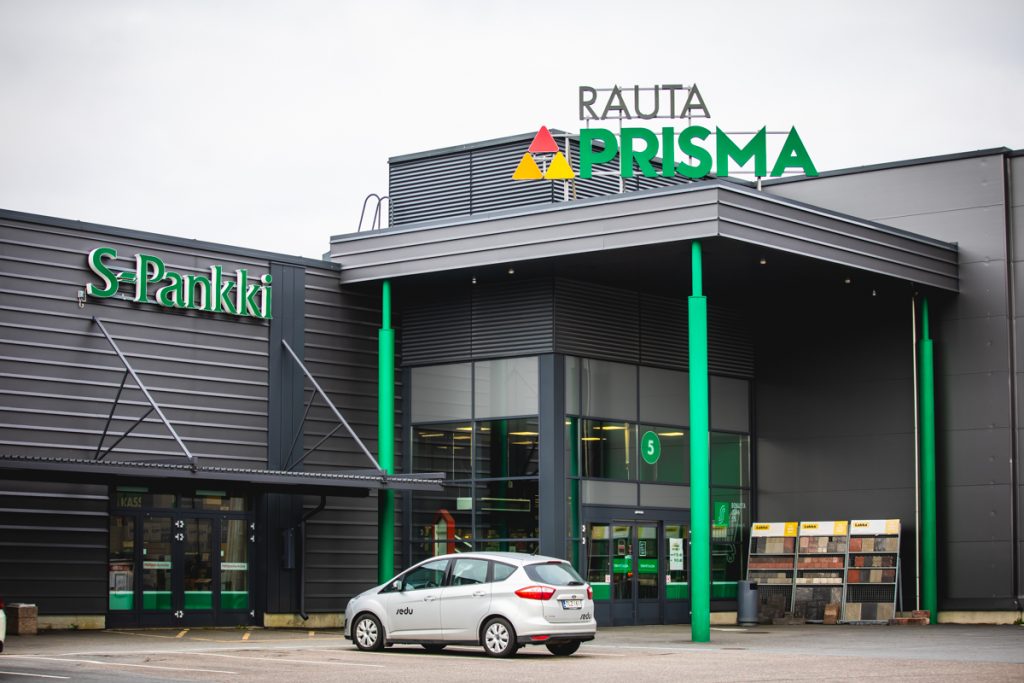
THE S GROUP’S REFORM PROCESS was a painful and close-run thing. E Group ran into very similar problems about the same time, and also tried to reform itself, but ended up going bankrupt instead. But after the reforms took hold, S Group thrived and expanded, going from about 16 percent of the Finnish grocery market in the early 1990s to 47 percent today.
Today, S Group owns the hypermarket chain Prisma, the supermarket chain S Market, the small grocery store chain Sale, the gas station/convenience store chain ABC, the department store Sokos, plus various hotels and restaurants. It has its own bank, unsurprisingly called S Bank. The 19 regional co-op societies own SOK, which provides services to the regional cooperatives, as well as planning and management advice.
Skurnik took me on a tour of its main retail operations so I could see for myself. Prisma, which accounts for about a third of total company sales, is its most impressive and highest-revenue operation. It’s a classic European hypermarket—like the very biggest Walmart except a bit more upmarket—with clothing, electronics, sports equipment, housewares, groceries, and more, plus several smaller spaces that are rented out to other companies, like hairdressers, pharmacies, or Alko, the state monopoly on high-alcohol drinks. If you can imagine any consumer good, from a four-foot 500-watt party speaker to any of about a hundred types of deli meat, chances are good that Prisma has got it somewhere.
One way to measure the effect of the cooperative structure is by comparison with Kesko, which is still making good money, even if it has been surpassed by S Group. In 2022, Kesko made €11.8 billion in sales, and paid its CEO and president Mikko Helander €4.9 million, plus a million euros in pension payments. The same year, SOK CEO Hannu Krook got just €1.1 million. In other words, Krook got less than one-fifth the compensation, despite overseeing a company that makes 14 percent more in sales.
One might respond that Helander is much more directly responsible for Kesko’s operations, and therefore “deserves” more money. But even if we grant that claim for the sake of argument, that is still more or less the point—a successful, cutting-edge retail company does not need to be run like a dictatorship, with one person calling all the important shots.
Another instructive comparison is to the outdoor retailer REI, the largest consumer cooperative in the U.S., with some 23 million members (myself included). While members do legally own the company and get a share of the profits, in practice they have no say over how the company is run. Nominations for the election to the company board are controlled by the board itself, and management does not send out regular information about how to vote. As a result, turnout for board elections is typically in the low single digits, and top managers claim a disproportionate share of the cooperative surplus.
In 2021, the most recent year for which figures are available, REI had total sales of $3.7 billion, and paid all its top executives over a million dollars: Chief Experience Officer Curtis Kopf got $1.1 million, CFO Kelley Hall got $1.3 million, technology and operations chief Christine Putur got $1.5 million, Chief Customer Officer Ben Steele got $1.7 million, and President and CEO Eric Artz got $4.6 million, for a total of $10.2 million. At the current exchange rate, that’s about €3.5 billion in sales and €9.5 million in compensation.
At SOK in 2022, the top management team aside from the CEO made €4.1 million put together, for a total of €5.2 million—or about 45 percent less than REI management, despite overseeing a company that is almost four times larger. (Amusingly, REI’s CEO gets an even larger share of the corporate surplus than Kesko’s CEO does.)
This discrepancy is fascinating. What inspires experienced business experts to work at S Group, when they probably could be making a lot more money in the private sector? Or why don’t they rig the S Group structures to benefit themselves, along the lines of the REI model?
Presumably, one reason is that big salaries are less attractive in a country with stiff taxation on the rich. Another is that for the ambitious, working at one of the biggest companies in the country is still exciting and stimulating even if it means taking a salary hit. Not to mention that a salary in the mid-six figures or into the millions is still pretty great. And as we’ll see below, ruthless profiteering would threaten S Group’s business model.
But when I asked people who had served and studied S Group about why the executive salaries are so relatively modest, they started talking about morality and ideology. “S Group is a business enterprise … but at the same time, it’s in some ways an ideological, cooperative society,” Kari Neilimo, who was chairman and later CEO of SOK for over a decade during the reform period, told me. “The idea is to create a better life for people.”
Others pointed to the purpose of cooperation itself: equality, solidarity, continuous improvement. “The cooperative is for the members—to serve the members, to provide such products and services for the members that they need,” said Skurnik.
Part of this moral commitment surely has to do with Finnish culture. Traveling around the country, at first Finns seemed rather standoffish or even cold toward strangers, though always scrupulously polite. But this is a mistaken first impression. Once one manages to crack through the surface, Finns tend to be very kind and helpful, though in a calm way. Chatting with an Iraqi immigrant bartender, he summed it up this way: “Finns are like coconuts—hard on the outside but soft on the inside.”
This isn’t a bad description of S Group itself. Its surface operations are all about extreme competence and professionalism. But at the core of the business is a warm regard for the ordinary working stiffs who make up the bulk of its members. The point of that competence is not to coldly stack up profits for a tiny handful of executives and shareholders who are already wealthy. It is to benefit the members—which happen to be practically everyone in Finland.
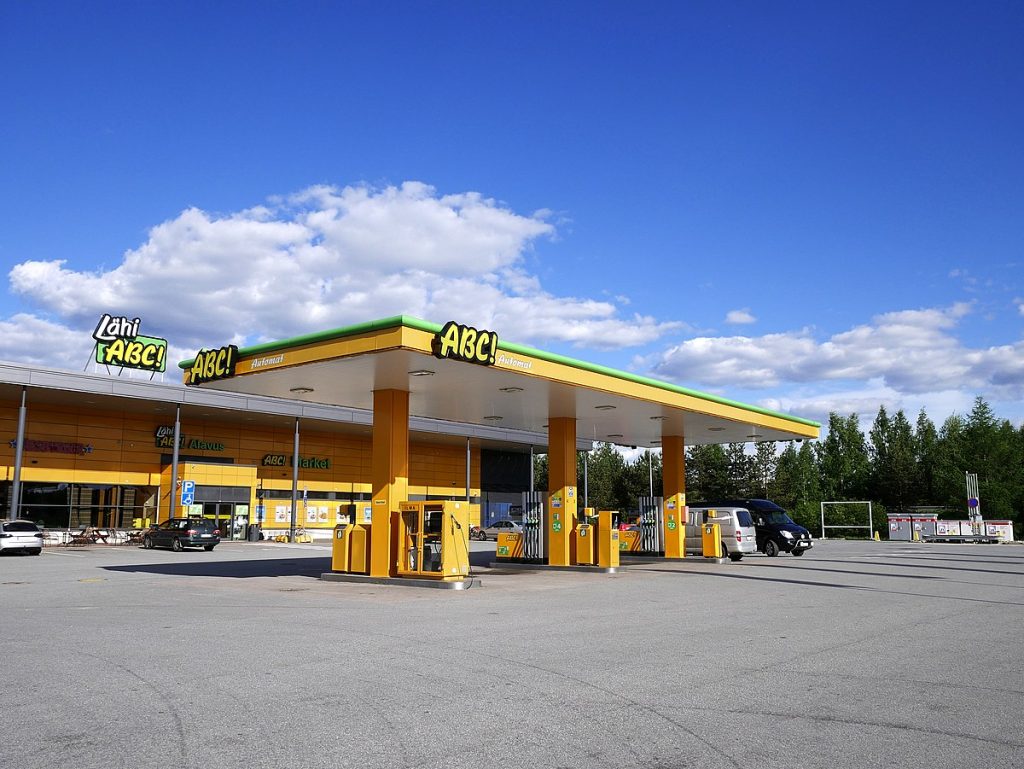
OF COURSE, IT ISN’T ALL PEACE, love, and harmony at S Group. For one thing, the company’s market dominance gives it enormous leverage over its suppliers. “If you go to dairy farmers and ask them, they think SOK is a very hard negotiator,” Skurnik told me.
But that power is limited by countervailing forces, as well as the broader context of Finnish society. Valio, for instance, is a dairy farmer cooperative that produces about 85 percent of all the country’s milk. (A company representative declined to comment for this article.) Atria and HKScan occupy a similar position with respect to meat, and Munakunta in eggs. Finland’s largest timber company and largest bank are also cooperatives; relative to its size, it is certainly the most cooperative country in the world.
That context means individual Finnish farmers don’t have to face the mighty S Group purchaser alone—unlike, say, American contract chicken farmers, who are squeezed to their very marrow.
Moreover, S Group gets about 80 percent of its food from within Finland, which is important on several levels. First, trying to squeeze every last nickel out of Finnish farmers risks driving them out of business, in which case it would have to source food from other locations that might be more expensive or of lower quality. (Egg, beef, pork, and chicken imports are especially tightly regulated to keep out salmonella.) Second, S Group’s business model depends in part on the perception that being a member and shopping at its stores benefits broader society. Ruthless bargaining threatens scandal and backlash.
Third, Finnish shoppers strongly prefer to buy food sourced from Finland, both for pro-social reasons and because of worries about food security. That extends to the government as well, which regards a secure domestic food supply as a national-security priority. Finland saw the last famine in Northern Europe from 1866 to 1868, which killed perhaps 8 percent of the population, and also experienced food shortages during World War I, the 1918 civil war, the 1940 Winter War, and World War II. Today, with Russia attempting to disrupt Ukraine’s farms and grain shipments as part of its ongoing invasion, domestic food security seems even more important. S Group squeezing suppliers, therefore, might bring down the regulatory hammer. In Finnish politics, nearly all agree that “we have to have enough food production, and our own food chain in Finland,” said Karhu.
Something similar is true with respect to S Group workers. The Finnish labor movement is extremely strong by American standards, with some 59 percent of workers union members, and about 89 percent covered by a union contract. Labor isn’t shy about exercising power, either. Back in 2019, then-Prime Minister Antti Rinne proposed a plan to cut the pay of a few hundred workers at Posti, the state postal service. This inspired a strike, then sympathy strikes, and then the withdrawal of the plan and resignation of Rinne, who was replaced by Sanna Marin.
If S Group were to become known as a place that, say, fired an estimated 10 percent of its warehouse workers every year for not packing boxes fast enough, or stationed paramedics outside its buildings during heat waves rather than installing air-conditioning (as Amazon has done in prior years), it would be a major threat to its business model.
In fact, most S Group workers are unionized, and by all accounts the unions and the workers have a good working relationship. Workers also have two seats on the SOK supervisory board; such worker representation in corporate governance is common in Europe.
To get the workers’ side, I spoke with Jani Pölönen, who has been a union representative for HOK-Elanto, the largest single cooperative in S Group, for more than 20 years. “We have a very good relationship with the CEO and other company leaders,” he said. “I try, and I know the company tries also, that all the disagreements we can solve inside the company, we don’t have to go to court.” He agreed that S Group would do just about anything to avoid developing a reputation for worker abuse. “If they are, it will go public quite soon.”
I asked a bartender at Amarillo, an S Group chain serving serviceable Tex-Mex, whether his job was any different than at a private restaurant and whether he liked it. “It’s about the same,” he said, shrugging. “I like it better though because there are three more S Group locations around the corner if I want something different.”
Taken together, this makes S Group remarkably uncontroversial for a dominant firm, which is in keeping with its history. It is not a capital-R revolutionary institution, and it was certainly intended to be more moderate than communist alternatives when it was first formed, long ago—alternatives, I might add, that have been dead and buried for 30 years.
S Group isn’t run by the government, nor does it propose to abolish private property. On the contrary, the competition from Kesko was quite important in motivating S Group’s successful transformation. “You need some external pressure. If you are just a monopoly, not only would it be bad for prices, but it would be bad for efficiency,” Panu Kalmi, a professor of economics at Vaasa University, told me. As such, S Group has no plans to conquer the rest of the retail market in Finland, or make extensive efforts to grow overseas.
A recent poll found that a cooperative economic model was the most popular among Finns with 70 percent support, ahead of capitalism or socialism. This makes sense. The vast majority of Finns shop at S Group stores regularly, it has a reasonably benign relationship with its suppliers and workers, and perhaps most of all, it just works.
That consensus support is reflected in the Finnish parliament, where a cooperative caucus has formed in the last few years with members from every single big party, including the far-right True Finns.
But despite its relatively modest aims, there’s still something inspiring and even a bit radical about a cooperative that is this successful. It proves there is much more to human motivation than base greed. In the right context, people can and do work hard to build an egalitarian project because it’s satisfying to help others, or because it’s exciting to participate in a grand project for the benefit of all, or simply because they think it’s the right thing to do. They can do this as part of the management of an explicitly businesslike institution selling goods and services in the market. And they can even outcompete private entrepreneurs in the process.
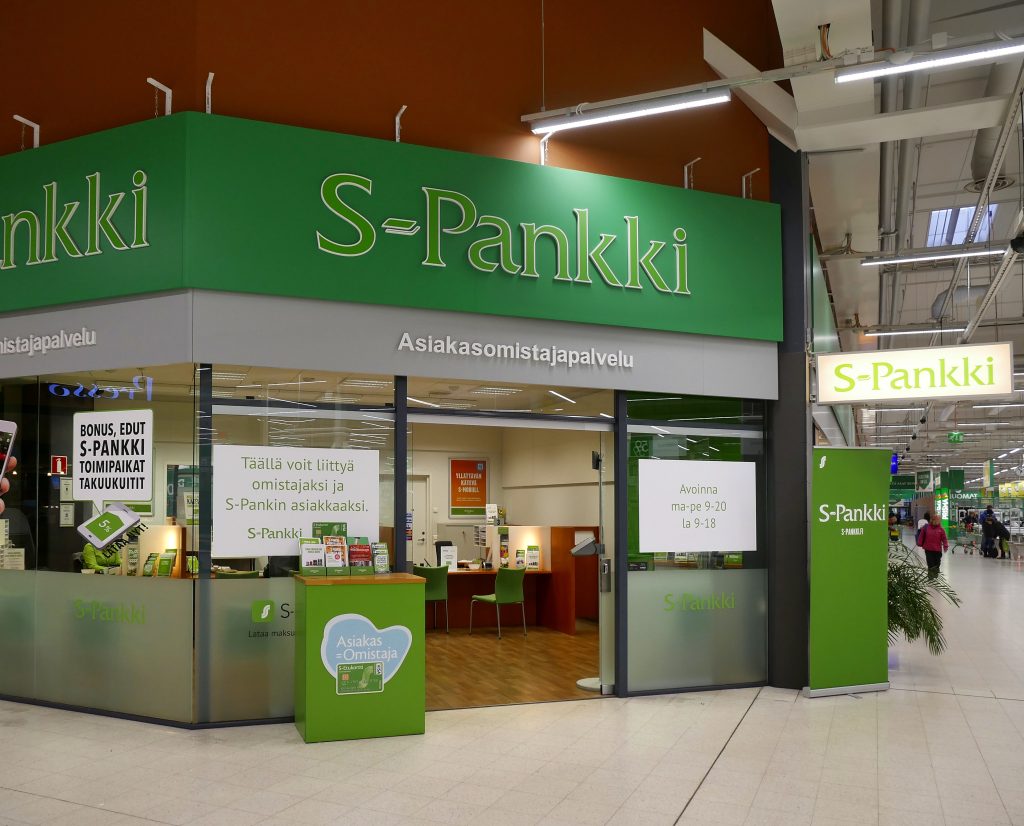
FINALLY, I MUST CONSIDER the applicability to the United States. In general, it is all but impossible to imagine America adopting most Nordic institutions anytime soon. Even if simple policies—like, say, a Finno-Norway-style full year of paid family leave—could be easily implemented in theory, they are so far outside the political mainstream that they would get only a handful of votes in Congress.
Trying to copy S Group exactly would be even more difficult. There is no quick way to replicate the long history of growth, cultural development, and success that gave S Group the working capital to reform itself in the first place. Financing growth out of current profits or loans (instead of taking investment from capitalists) means slow growth at best—and to ensure that the co-op does not end up like REI, a norm would have to be cultivated somehow that it’s wrong for its leaders to rig the system to benefit themselves. S Group’s benign dominance would require additional countervailing institutions to counteract its market leverage on both the supplier and worker side, plus a government ready to take action should things go sideways.
But that is just to say that any new institution or reform is of course going to be rooted in local history and traditions, and America is a very different country than Finland. Despite this, we’re all human beings, and we can learn from each other. In times past—when the top marginal tax rate was 94 percent, for instance—America was a very different place. Finland also was very unequal and polarized in the early 20th century, when it was ruled by a foreign monarch, and then conservatives and communists fought a brutal civil war. There is nothing written in American national DNA saying we must tolerate stupendous inequality and political dysfunction forever. We can do better than this.
S Group’s quiet efficiency is instructive for American leftists as well. Perhaps thanks to the heavy influence of academics on the American left, we have a habit of producing analysis from 30,000 feet, or based on highly abstract metaphysical theories. S Group reminds us of the value of practical expertise and concrete benefits for the broader population. For any institution of serious size to benefit people, careful attention must be paid to the dull details of management and logistics.
S Group might not be the most sizzling, eye-catching subject in the world. But sometimes, it turns out, great successes are like that.
This article was produced in partnership with The American Prospect.

